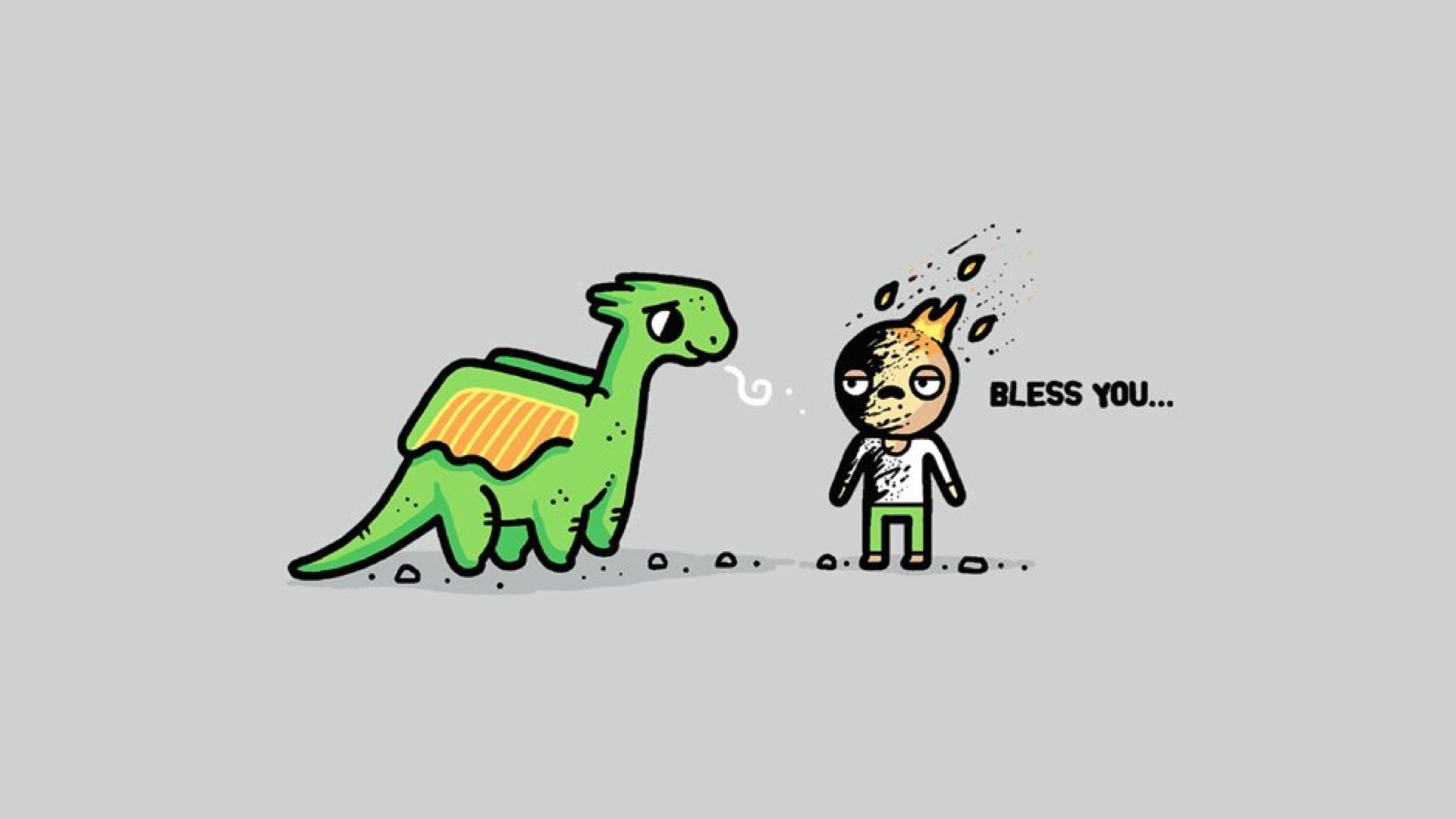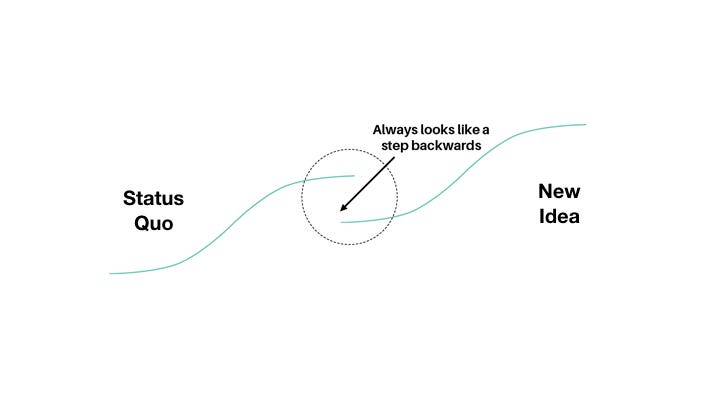
“The conventional view serves to protect us from the painful job of thinking.” — John Kenneth Galbraith
Pain is a warning signal produced by the brain. The brain uses pain to make us aware of sensations or situations that may be a threat to our health. The brain collects information from the senses and the body and when it feels there is a potential threat to our wellbeing and thus it slows us down in some way.
When we have the flu it can be very painful. We often wonder how the flu can make our whole body ache. Our joints, muscles and even our skin.
This is where we realise what great orchestrators our brains really are. It is not simply the flu virus which causes the symptoms, it is our brains. But why do our brains do this?
When we are sick, our bodies spend precious energy on fighting infection and virus. The symptoms such as debilitating pain are our brain’s way of slowing us down so we direct all our energy towards fighting infection. Resisting the need to rest becomes futile and we eventually have to give in and let our bodies solve the problem.
Fight or Flight and Better Safe than Sorry

Picture our caveman days, we were constantly alert to an attack on our lives. Our autonomic nervous system was ready to kick in at any stage. We react by initiating our fight or flight response. In that state, our bodies behave by increasing our energy output, our vigilance, and our protective reactions.
Say, for example, we see (or think we see) a sabre-toothed cat in our peripheral vision, we dart out of the way as quick as possible. We discover it was just a bunny rabbit jumping in a bush, we breathe a sigh of relief, we may feel a little silly, but who cares we are still alive. Better safe than sorry!
The negativity bias of “better safe than sorry” is baked into our brains. We have this natural bias towards safety and towards survival. While it is negative it is also beneficial.
In the corporate world, we don’t need to run from sabre-toothed cats, but our brains have not evolved beyond the negativity bias of survival as if we did. These survival strategies remain part of our modern-day stress responses.
In the corporate world, our sabre-toothed cats come in the form of disruption in our industries, the threat of not hitting our targets or failing to meet our project deadlines.
In respect to corporate transformation of any kind, new ideas and change to the organisation are treated in the same way.
Corporate Flu
“The human mind treats a new idea the way the body treats a strange protein, it rejects it.” — P.D. Medawar (Biologist)
Many organisations get to a stage of maturity where processes are in place, the big wheel is turning and compensation is based on execution of the business as it is today. Anything corporate energy expended beyond this is seen as a waste of resources.
When organisations encounter the corporate flu in the form of disruption to their industry or threats from new market entrants many of them react in the same way as the brain does to the flu.
Just as the brain creates perceived pain when we have the flu, an organisation creates imagined pain points when it is under stress. These pain points manifest as ungrounded objections to change, “that will never work”, “we tried that before”, “that is beyond our area of expertise”. The flu symptoms appear as a culture of blame, a lack of psychological safety to experiment and groupthink to name a few.
This is why changemakers and innovation workers within organisations walk a fine line between changing the company or being rejected by the company. In spite of this, these great people are willing to take the risks inherent in that role in order to drive lasting change. For them, it is worth the risk, but it is difficult to find a corporate body who will adopt the “fight” response. This is why we see these people often leave and join the disruptors.
This week’s guest on the innovation show (links to show below) is a succesful brand creator and inventor of Baileys David Gluckman. David tells us that one of the keys to selling ideas to any organisation is getting as high up the organisation as possible.
It is possible to override the brain’s negativity bias towards safety and the “better safe than sorry” mindset. The only way to do this is to override our executive functioning, which is the set of mental skills that help us get things done. Sound familiar? The only way to make lasting changing in an organisation is to initiate that change from the top (the executive), then the middle-management and then the organisational body.
It is liberating when we understand that the little voice in our head, the “fight or flight” voice is actually there to protect us. The negativity bias is there to ensure we stay alive. We can simply acknowledge it, (like checking if it was a sabre-toothed cat or rabbit in the bush) and then proceed safely in the knowledge that we have completed due diligence.
Jim Detert is a global expert in the field of selling ideas within an organisation (Jim joined us recently on the innovation show). He tells us when we adopt the tactic of highlighting a threat (a consequence of not adopting a new idea) this can create a burning platform for change. However, this tactic can be risky and can often backfire. When decision makers focus on potential loss (loss aversion), they adopt a “flight” response and run away from the problem (or solution).
Jim and his team ran a survey in which the most successful “idea sellers” reported success when they positioned their new idea to “catch the wave” of a new trend or technology. He tells us when decision makers are in exploration mode of a new idea, raising an open-ended inquiry is a better tactic than proposing a specific solution. The latter will be rejected as it smells too much like a new idea.

As business leaders and visionaries, it is important to realise that all major advances are made in the face of current understanding. Change is difficult and always looks like a step backwards. Ask Yahoo, who turned down the opportunity to buy Google or ask Blockbuster who turned down the opportunity to buy Netflix.
Our mental immune systems (personal or corporate) are biased to turn down new ideas to protect the status quo, but in doing so may prevent us from ultimate success. Seeing beyond the perceived pain of corporate flu is difficult and is the difference between management and vision.
David Gluckman tells us he had the privilege to work with visionaries who bought new ideas. He tells us these people are rare. He recommends that idea buying should be taught in business schools. It is always easier to reject an idea than to run with it. It is easier to manage than to lead. Running with an idea means more risk, more uncertainty, but the payoff can be transformatative.
As always comfort is the enemy of progress. This is a constant in both life and business. No growth happens in the comfort zone.
IF YOU LIKE THIS POST, PLEASE HIT LIKE SO OTHERS SEE IT
Our guest on this week’s innovation show is David Gluckman. David is the common denominator of so many brands we know and love. Kerrygold butter, Baileys Irish Cream, Smirnoff Black, Le Piat D’or and many many more.
We discuss his book That s!it will never sell! through the lens of the lessons it imparts. We discuss the best ways to sell ideas. We discuss the best ways to deliver ideas. We discuss new product development and how to get them over the line.
David shares some of his failures and the lessons learned and the ones that got away.
EP 83: That Sh!t Will Never Sell — Thoughts on Ideas and How to Sell Them with author David Gluckman
Website: http://bit.ly/2FwsOJw
Soundcloud: http://bit.ly/2EKP2bF
Spotify: http://spoti.fi/2rXnAF4
iTunes: https://apple.co/2gFvFbO
Tunein: http://bit.ly/2rRwDad
iHeart Radio: http://bit.ly/2E4fhfl
Subscribe by email: http://bit.ly/2EojOH7
You can find out more about the book and David here:
http://www.thatshitwillneversell.com/
You can read his Linkedin articles reference on the show here:
https://www.linkedin.com/pulse/marketing-success-requires-appetite-risk-david-gluckman
#NewProductDevelopment #Leadership #Innovation #NPD #R&D #Alcohol #Marketing#Branding #Products #Consulting #ThatShitWillNeverSell #TheInnovationShow #Drinks